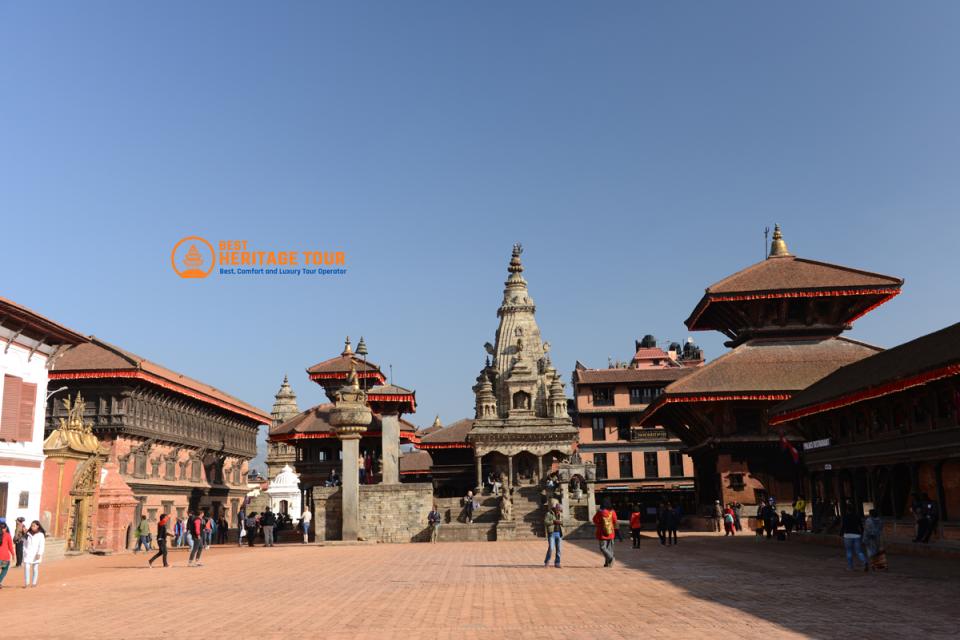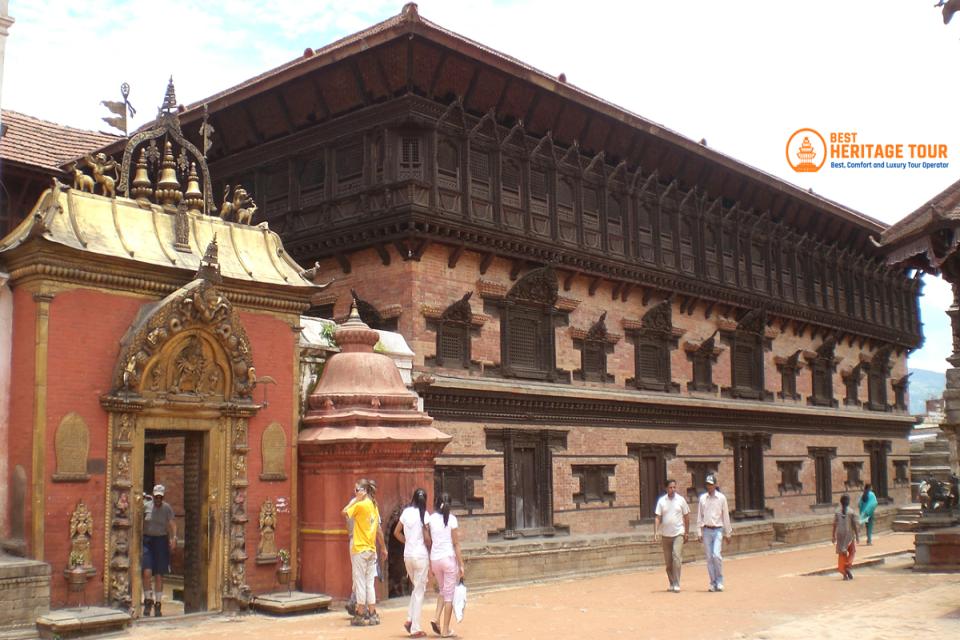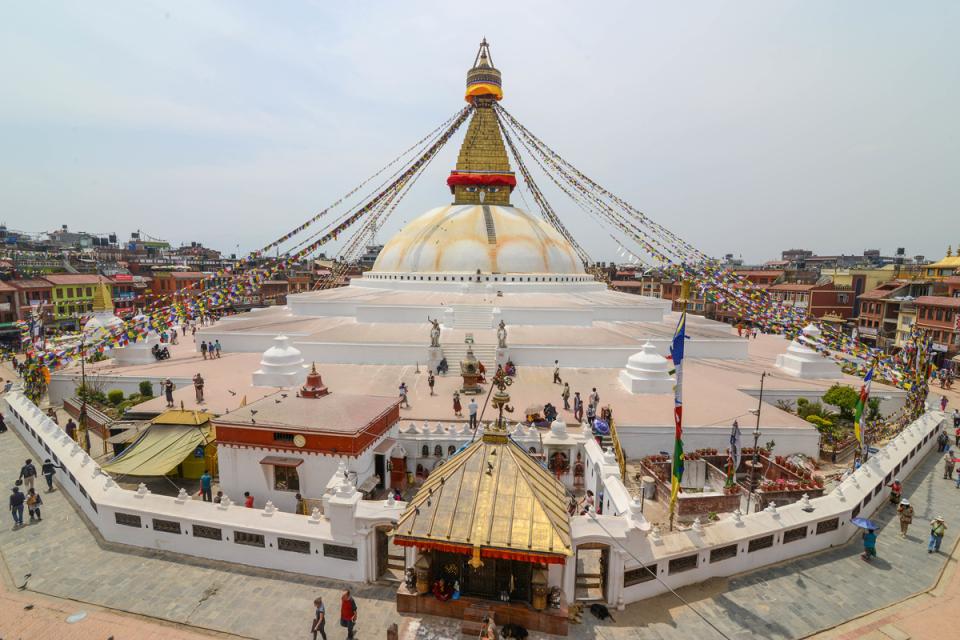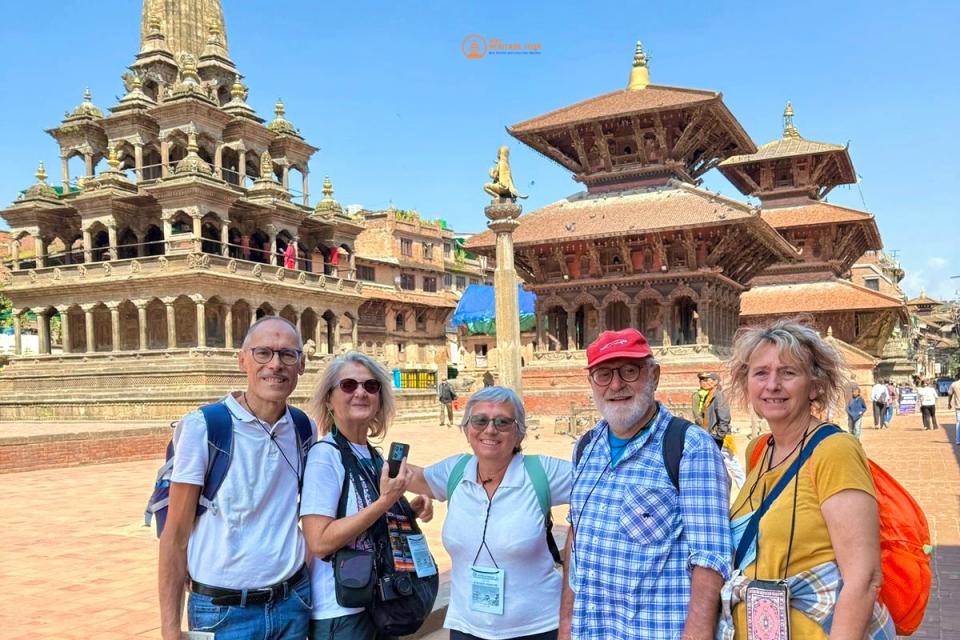Nestled in the heart of Kathmandu, Boudhanath Stupa (also known as Boudha Stupa) is one of Nepal’s most revered and iconic landmarks. As a UNESCO World Heritage Site, this majestic structure serves as a center for Tibetan Buddhism and a peaceful sanctuary for travelers and pilgrims alike. With its striking mandala design, fluttering prayer flags, and tranquil atmosphere, Boudhanath offers visitors a chance to connect deeply with Nepal’s Buddhist heritage. Whether you’re a spiritual seeker, a history enthusiast, or a photography lover, a visit to Boudhanath Stupa is an unforgettable journey.
The History and Significance of Boudhanath Stupa
Dating back to the 14th century, Boudhanath Stupa is one of the oldest and largest stupas in Nepal. Its immense dome, vibrant prayer flags, and intricate mandala design symbolize the universe, representing peace and spiritual awakening. It is believed to house relics of the Buddha, attracting Tibetan Buddhist pilgrims from around the world. The stupa not only reflects the deep spiritual roots of Tibetan Buddhism but also showcases Nepal’s historical connection to the spread of Buddhism across the Himalayas.
Exploring Boudhanath Stupa: What to Expect
A visit to Boudhanath Stupa is an immersive experience that combines spiritual energy with cultural richness. The first thing you’ll notice is the towering stupa, surrounded by fluttering prayer flags and a serene atmosphere. Pilgrims and visitors walk around the stupa in a clockwise direction, spinning the prayer wheels and chanting mantras, a practice believed to bring peace and merit. The surrounding courtyards, filled with monks performing daily rituals, create a calm and reflective environment.
The spiritual energy of Boudhanath is palpable. Whether you’re there to meditate, admire the architecture, or observe daily rituals, the stupa provides an enriching experience that is both peaceful and awe-inspiring.
Things to See Around Boudhanath Stupa
While the stupa is the centerpiece, the area surrounding it is also rich in culture and history. You’ll find Tibetan monasteries, temples, and colorful markets selling traditional Tibetan handicrafts, prayer beads, and incense. Some of the must-visit spots around Boudhanath include the Shechen Monastery and the Kagyu Monastery, where you can gain deeper insight into Tibetan Buddhist practices.
For food lovers, the streets around Boudhanath are lined with Tibetan restaurants offering delicious dishes like momo (dumplings), thukpa (noodle soup), and butter tea. These eateries not only offer a taste of authentic Tibetan cuisine but also provide a perfect spot to relax while enjoying views of the stupa.
Why Visit Boudhanath Stupa?
Boudhanath Stupa, one of the most iconic landmarks in Kathmandu, offers a deeply enriching experience for all types of travelers. Here are the top reasons why this UNESCO World Heritage Site should be on your Nepal itinerary:
- Cultural Heritage and Spiritual Significance: As a UNESCO World Heritage Site, Boudhanath Stupa is a major symbol of Tibetan Buddhism and a must-see for anyone interested in Nepal's spiritual heritage. Its architectural grandeur and historical relevance provide visitors with a meaningful connection to Nepal’s Buddhist roots.
- Tranquil Sanctuary and Peaceful Escape: Boudhanath Stupa offers a serene environment that serves as a peaceful refuge from the bustling streets of Kathmandu. Whether you’re looking to meditate, reflect, or simply relax, the peaceful ambiance provides a perfect escape in the heart of the city.
- Photography Paradise: For photographers, Boudhanath Stupa is a treasure trove of photo opportunities. Capture the iconic views of the stupa, surrounding prayer flags, intricate Tibetan architecture, and vibrant street scenes. It’s an ideal location to photograph the beauty of Nepalese spirituality and culture.
- Spiritual Enrichment and Reflection: Boudhanath Stupa is a center of spiritual energy. The presence of monks, the rhythmic turning of prayer wheels, and the flow of pilgrims walking around the stupa provide a deeply enriching and reflective experience for visitors, whether they’re spiritually inclined or simply curious.
- Nearby Tibetan Monasteries and Temples: The surrounding area is home to several Tibetan monasteries and temples, such as the Shechen Monastery and Kagyu Monastery. These religious sites offer a unique opportunity to learn more about Tibetan Buddhist practices and immerse yourself in the rich cultural heritage that makes Boudhanath a spiritual hub.
- Authentic Tibetan Cuisine: Explore the local Tibetan cuisine available around Boudhanath. Enjoy traditional dishes such as momos (dumplings), thukpa (noodle soup), and butter tea at the many Tibetan restaurants surrounding the stupa. These eateries provide the perfect spot to relax while enjoying the stunning views.
- Relics of the Buddha: Boudhanath Stupa is believed to house relics of the Buddha, making it one of the holiest sites for Tibetan Buddhist pilgrims. A visit here allows travelers to connect with the spiritual history of Buddhism in Nepal.
- Vibrant Festivals and Local Traditions: Visit Boudhanath Stupa during major Buddhist festivals like Buddha Jayanti or Lhosar (Tibetan New Year) for a chance to experience colorful cultural celebrations. Traditional dances, rituals, and processions create an immersive experience that reflects the local Tibetan culture.
- Healing and Meditation Space: Boudhanath Stupa is considered a place of spiritual healing. Its peaceful environment offers a perfect setting for meditation and contemplation, helping visitors relax and rejuvenate their mind and spirit.
- Easy Accessibility: Conveniently located just a few kilometers from Kathmandu’s Thamel area, Boudhanath Stupa is easily accessible by taxi, local bus, or even on foot. It’s a convenient destination for travelers looking to explore the spiritual heart of Kathmandu.
How to Get to Boudhanath Stupa
Boudhanath Stupa, one of the most popular tourist attractions in Kathmandu, is conveniently located just a few kilometers from the Thamel area. The stupa is easily accessible by taxi, local bus, or even on foot. If you're staying in Thamel, you can reach Boudhanath Stupa in approximately 30 minutes by taxi or enjoy a leisurely walk through Kathmandu’s vibrant streets.
Public transportation is also available, with the nearest bus stop located at Boudhanath, making it easy to reach the site from other parts of the city. Whether you're traveling by taxi or bus, getting to Boudhanath Stupa is quick and hassle-free.
Best Time to Visit Boudhanath Stupa
Boudhanath Stupa, one of Kathmandu’s most iconic landmarks, can be visited year-round, but the ideal times are during autumn (September to November) and spring (March to May). These seasons offer mild weather and clear skies, perfect for exploring the stupa and capturing breathtaking photographs. Early mornings and late afternoons provide a serene atmosphere with soft, golden lighting, ideal for reflection and stunning photography shots of the stupa and its surrounding areas.
For a unique cultural experience, plan your visit during Buddha Jayanti or Lhosar (Tibetan New Year), typically in spring, when the stupa comes alive with vibrant rituals, prayers, and celebrations.
Conclusion
Boudhanath Stupa is not just a famous landmark in Kathmandu, it’s a place where spirituality, culture, and history converge. Whether you’re visiting for spiritual growth, cultural exploration, or simply to enjoy the stunning Tibetan architecture, a visit to this UNESCO World Heritage Site will be a transformative experience. Don’t miss the opportunity to immerse yourself in the peaceful atmosphere of Boudhanath during your visit to Nepal.
For more information or to plan your visit, reach out to us:
-
Phone/WhatsApp/Viber: +9779851149197 / +9779810043046
-
Email: bestheritagetour@gmail.com / info@bestheritagetour.com
-
Website: www.bestheritagetour.com
-
Location: Thamel Marg, Kathmandu, Nepal
Let us help you make the most of your Boudhanath Stupa experience with our curated tours and expert guidance!
Author: Best Heritage Tour
Date: 13th May, 2025





